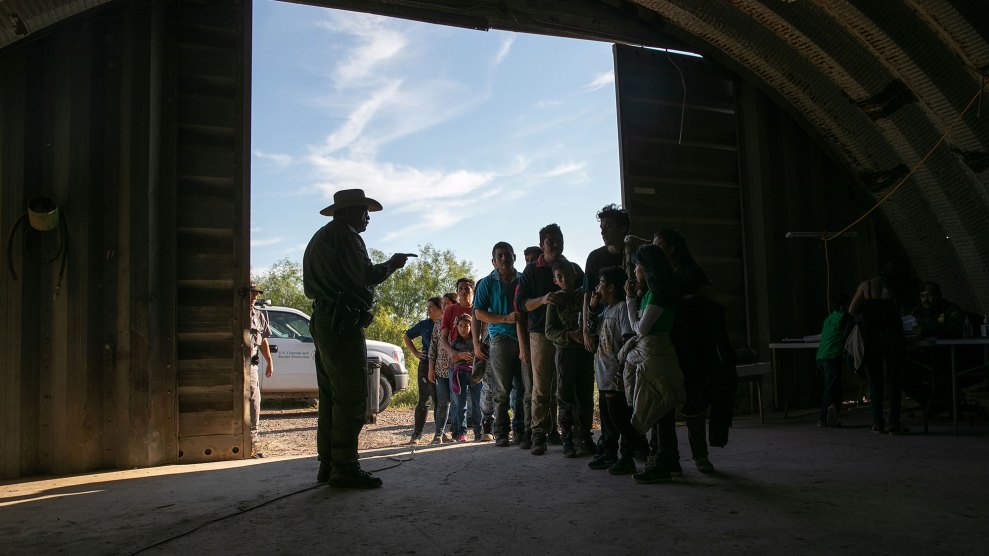
“We need the wall more than ever!” President Trump tweeted on March 10—one day before the WHO declared the coronavirus a global pandemic—just another of his more than 400 tweets about his dream of building a wall along the US-Mexico border. According to a Mother Jones analysis of government contracts, the Trump administration has so far doled out over $9 billion to build about 585 miles of wall—285 miles of replacement fencing and 300 miles of new construction. In Trumpian fashion, the project has been characterized by cost overruns, lawsuits, sycophantic contractors, and a notoriously ineffective (and incomplete) final product.
Walking the Line
A tour of the Trump border wall
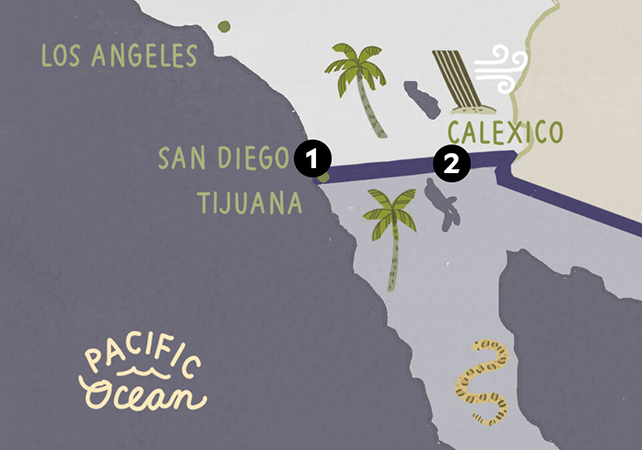
1. Near San Diego, California: In March 2018, Trump reviewed eight wall prototypes in San Diego. The Government Accountability Office noted that many, if not all, of the designs would be difficult to build along much of the border; Customs and Border Protection found that all were vulnerable to breaching. In the end, none were adopted, and the $3 million samples were destroyed in early 2019.
On a September 2019 trip to the border, Trump called new steel-and-concrete bollards he saw “virtually impenetrable.” Two months later, the Washington Post reported that Mexican drug smugglers had been cutting through them.
2. Near Calexico, California: A viral tweet in December 2019 showed a 16-year-old using a rope ladder to scale a newly replaced section of the wall. Border Patrol officials insisted “the border wall system worked exactly as designed,” and that the boy was apprehended.
In January, several recently installed panels of the wall collapsed in high winds in Calexico, California.
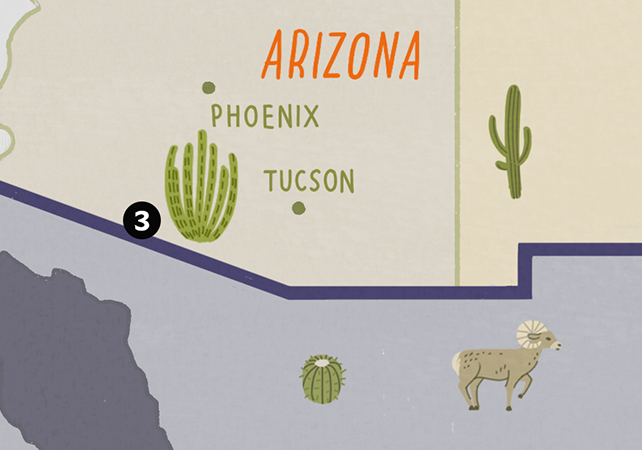
3. Organ Pipe Cactus National Monument, Arizona: Contractors have been blasting ground for the wall in Monument Hill, an area of Organ Pipe Cactus National Monument that contains burial grounds of the Indigenous O’odham people. “This is a total desecration of Native land,” one activist said.
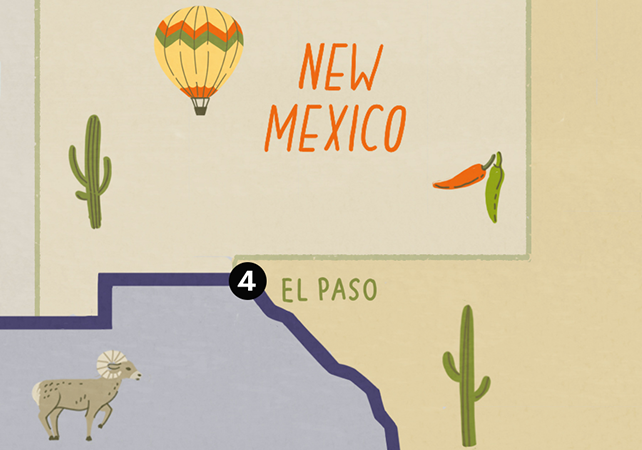
4. Sunland Park, New Mexico: After raising $20 million on GoFundMe, a group called We Build the Wall put up a half-mile of wall on private property in New Mexico in May 2019. The group, whose advisory board includes Steve Bannon, was reportedly negotiating with the White House to build and “donate” more walls.
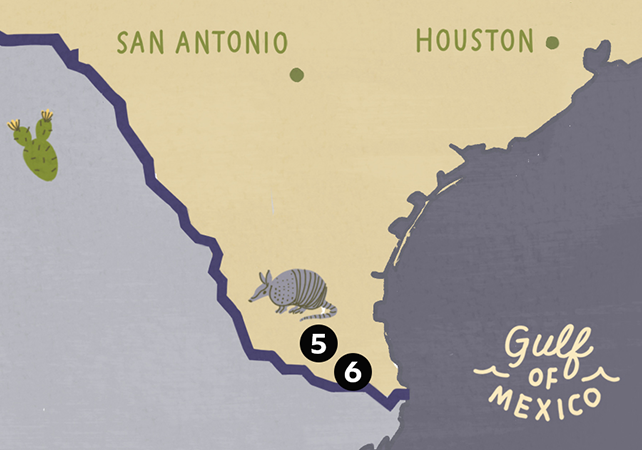
5. McAllen, Texas: In late 2017, Hidalgo County, Texas, sued several companies owned by a former county official, his wife, and their two sons for being part of a kickback scheme tied to a $232 million Homeland Security wall construction project.
6. Near McAllen, Texas: Plans to build a wall through the Lower Rio Grande Valley National Wildlife Refuge could degrade the habitat of many animals, including endangered ocelots and jaguarundis, as well as mountain lions, bobcats, collared peccaries, nine-banded armadillos, chachalacas, plains blind snakes, Texas earless lizards, Texas horned lizards, barred tiger salamanders, Rio Grande chirping frogs, southern yellow bats, and 400 species of birds.
Over the Top
The rising cost of a border boondoggle
Besides falsely claiming Mexico will foot the bill, Trump has consistently lowballed the price of his wall.
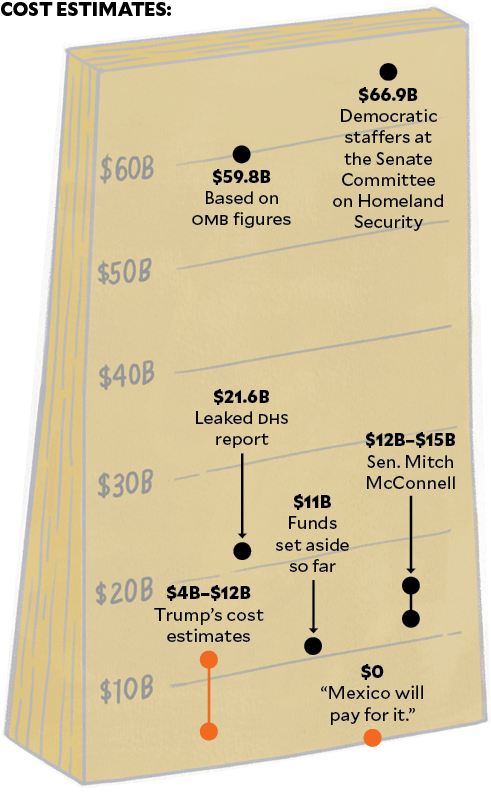
Off the Wall
Trump’s wildest wall wishes
Trump originally said his wall should be solid—“no windows, no nothing, precast concrete going very high.” But that wasn’t his most unrealistic proposal, according to New York Times reporters. As for the slatted steel wall that’s actually being built? “He thinks it’s ugly,” a White House official told the Washington Post.

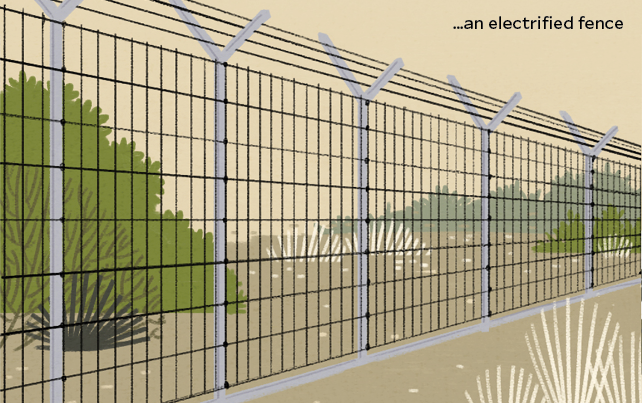
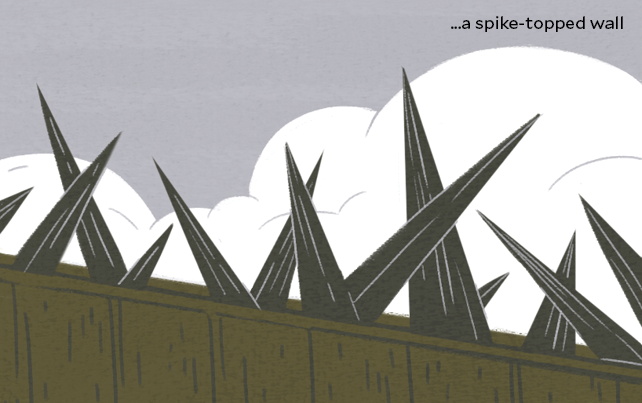

Fisher’s Price
How one company laid a foundation for cashing in on the wall
2017: Fisher Sand & Gravel, a North Dakota construction company, is contracted by the US Army Corps of Engineers to develop an all-concrete border wall prototype, but its model isn’t selected.
2018: Fisher spends $75,000 on “homeland security” lobbying—15 times what it spent in 2017.
January 2018: Then-Rep. Kevin Cramer (R-N.D.) invites company CEO Tommy Fisher—whose family had donated $8,000 to Cramer over the years—to attend the State of the Union address, in which Trump again calls for building a wall.
March 2018: In one of his at least 10 Fox News appearances between January 2018 and May 2019, Tommy Fisher touts his company’s wall-building skills on The Ingraham Angle: “If [Trump] allows our team, Fisher Industries, to play, I guarantee, no different than Tom Brady—once we get in we never come out, and if we don’t perform, the president can fire us.”
May 2019: The Washington Post reports that Cramer, now a senator, and Jared Kushner are lobbying to get Fisher Industries a border wall contract. Cramer says Trump had twice mentioned wanting Fisher to build some of the wall. “He always brings them up,” Cramer says.
November 2019: Fisher starts building a $40 million, 3-mile stretch of border wall on private land in South Texas. (We Build the Wall kicks in $2 million.) The project is put on hold when Fisher is sued by federal prosecutors and a butterfly sanctuary. Fisher tells Texas Monthly the plans to sell the wall to the government.
December 2019: Fisher Sand & Gravel is awarded a $400 million Pentagon contract for wall construction in Yuma County, Arizona. Rep. Bennie Thompson (D-Miss.), chair of the House Homeland Security Committee, asks for an investigation into whether the contract was the result of “inappropriate influence.”
April 2020: Fisher scores a $7.6 million contract to build 800 more feet of wall near Yuma. “Army Corps resources should be put to better use responding to the coronavirus pandemic,” Thompson tells the Daily Beast.
May 2020: The Washington Post reports that Trump is still pushing the idea of painting the fence black, which could add at least $500 million to the cost of the project. The Post also reports that Trump asked his aides to get input from Fisher Sand & Gravel.
Later in the month, the Army Corps of Engineers awards one of its largest Trump border wall contracts to Fisher— $1.28 billion to build about 42 miles of wall in Arizona.
